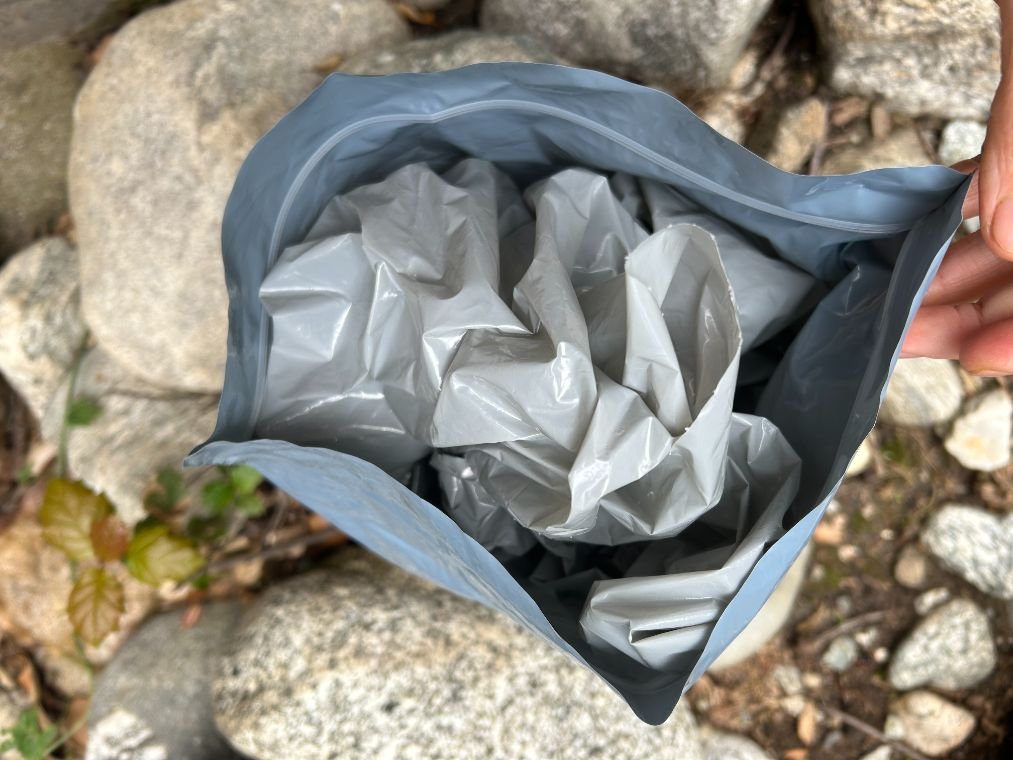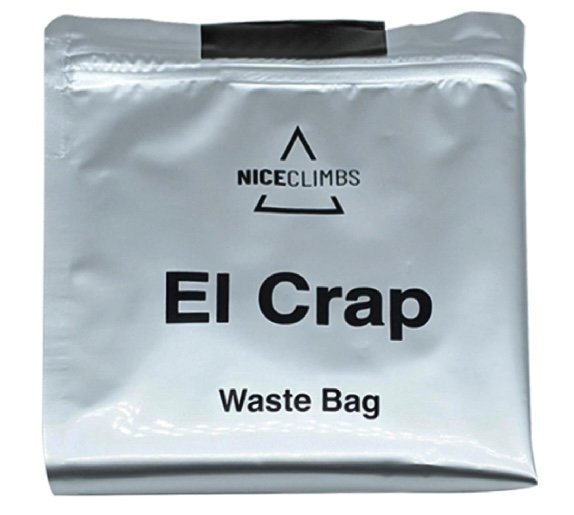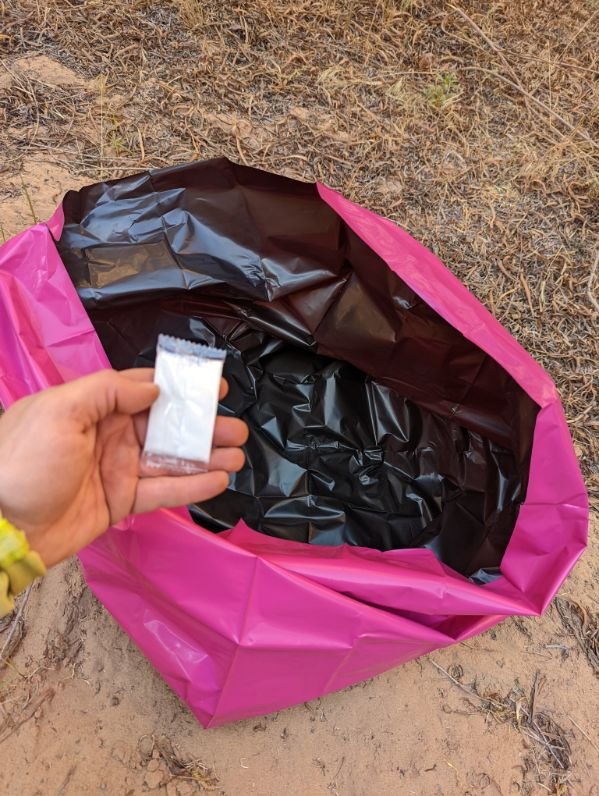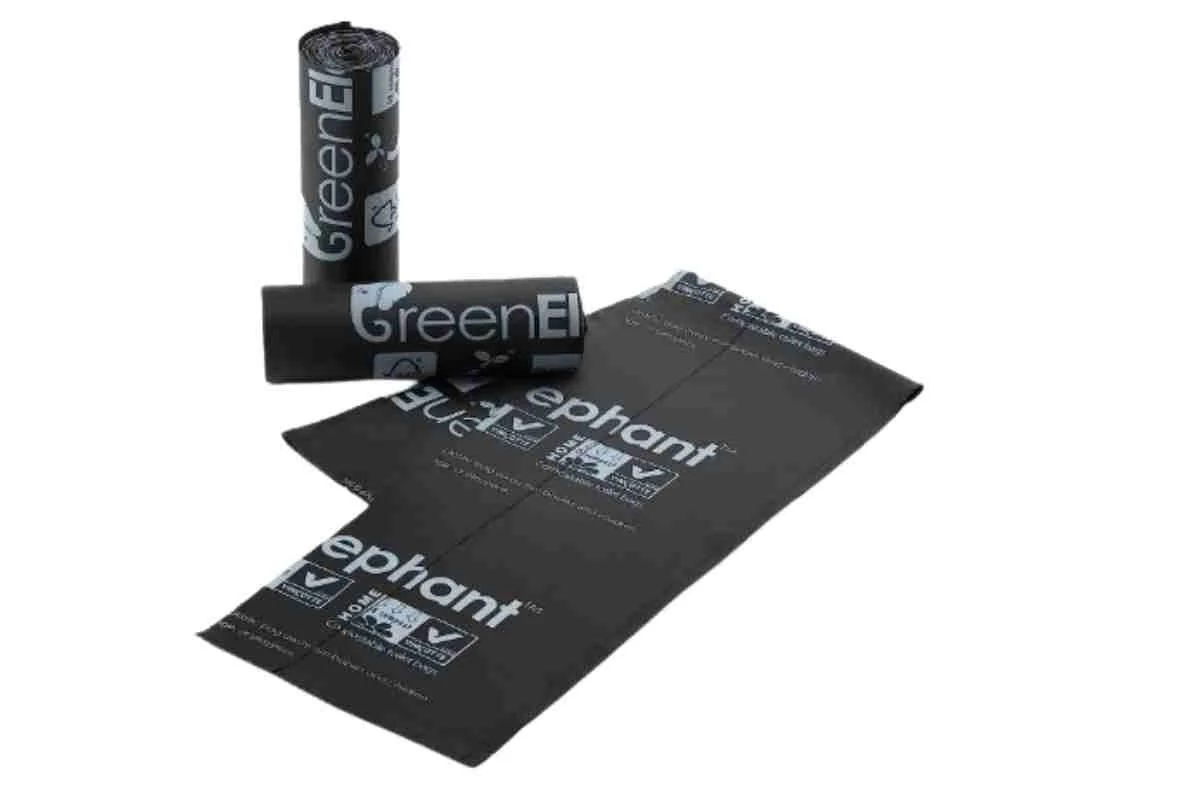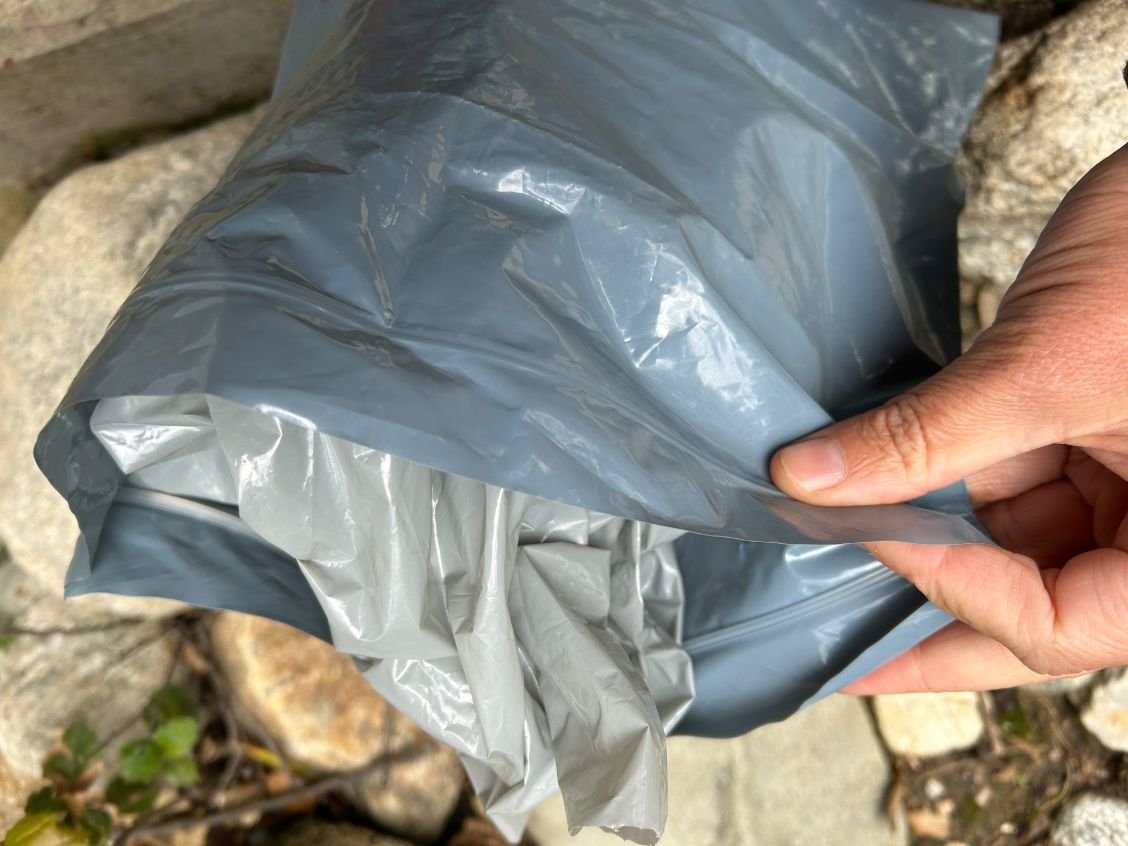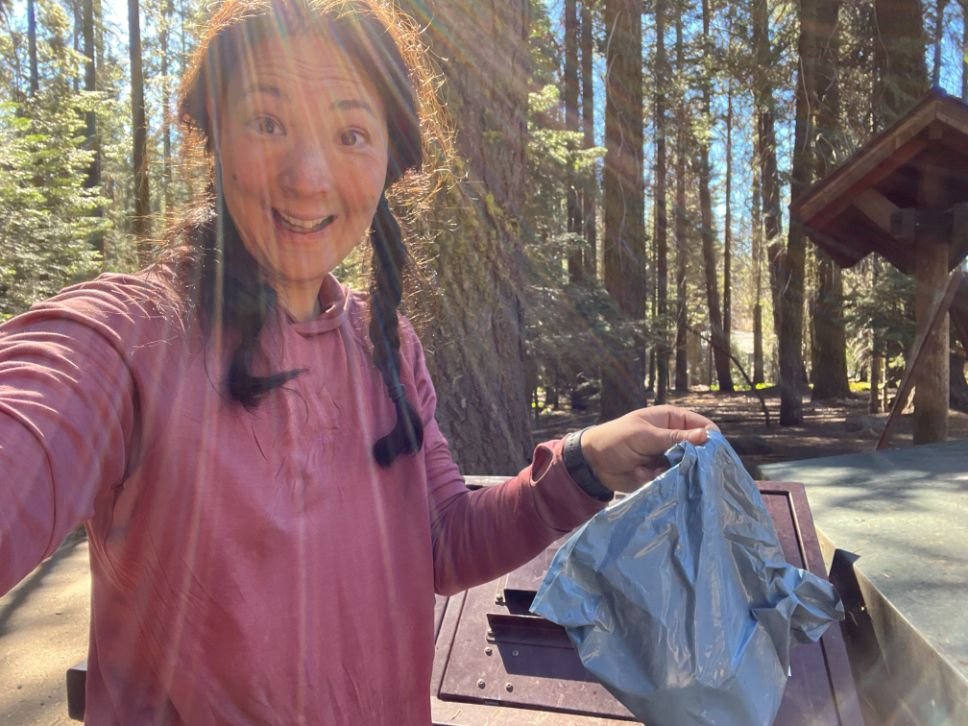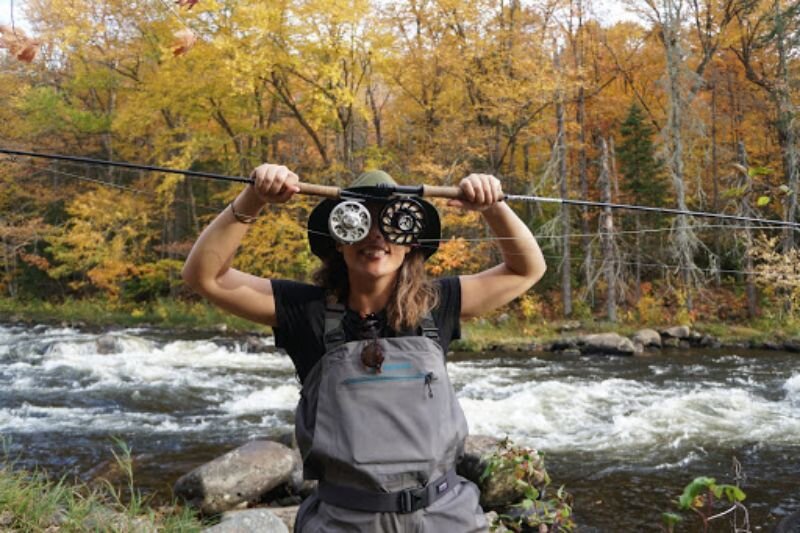Best Human Waste Bags and WAG Bags of 2025
Odor-proof, leak-proof, portable waste bags to Leave No Trace and Manage Human Waste
May 26th, 2025, updated with the new PACT Pack it Out Kit, new photos showing how to use, and new testing notes from different scenarios
Home > Gear Reviews
Human waste bags, including WAG Bags (Waste Alleviation and Gelling bags), are a crucial part of responsible outdoor recreation for backpackers, climbers, campers, rafters, and winter backcountry and glacier travel.
Double-bag wag bags allow you to properly dispose of human waste in a way that minimizes your impact on heavily impacted and sensitive ecosystems.
We review human waste bags based on their ease of use for pack-it in, pack-it-out, odor-proofness, leakproofness, capacity, and accessories to find the best human waste bags and best wag bags for different outdoor activities.
Popular areas that require human waste bags include the Mt Whitney Trail, overnight trips in slot canyons such as Zion National Park, Guadalupe Mountains National Park, including the Texas high point, and most glacier routes on Mt. Shasta, Lassen, and Rainier.
Climbers use human waste bags at popular desert crags and big wall climbs. Additionally, waste bags are popular – especially in conjunction with portable toilets – for campers and overlanders.
Prefer to dig a cathole? See our guide to Best Backcountry Potty Trowel
Want a cleaner way to “clean up?” See our guide to Best Backcountry Bidets
We create reader-supported, objective gear reviews independently selected by our editors. This story may contain affiliate links, which help fund our website. When you click on the links to purchase gear, we may get a commission — without costing you an extra cent. Thank you for supporting our work and mission of outdoor coverage for every body! Learn more.
Comparison Table
| HUMAN WASTE BAG | TREELINE AWARD | PRICE PER KIT* | WEIGHT** | SOLID & LIQUID | TP? | SANITIZER? | USE WITH COMMODE? | INCLUDES GEL? |
|---|---|---|---|---|---|---|---|---|
| Restop2 | Best overall Read why |
$4.40 (in 12-pack) | 85-90 g (86g) | Both | Y | Y, small wipe | Y | Y |
| Cleanwaste The Original Wag Bag Go Anywhere Toilet Kit | Best lightweight Read why |
$3.00 (in 12-pack) | 71 g (71g) | Both | Y | Y, small wipe | Y | Y |
| Nice Climbs El Crap Waste Bag | Best for climbers Read why |
$3.00 (in 10-pack) | 68 g (70 g) | Both | Y | Y, small wipe | Y | Y |
| PACT Pack Out Kit | Best lightweight - solid only Read why |
$3.00 (in 6-pack) | 39.6 g (60 g) | Solid only | Y | Y | Y | Y |
| Biffy Bag | Most discreet Read why |
$3.05 (in a 10-pack) | 72 g (60 g) | Both | Y | Y, large wipe | N | Y |
*We note any discounts we see on our Deals page, which is updated daily.
**Claimed weight. When discrepancies found, our weighed weight displayed
The Best Human waste bags and wag bags
Best human waste bag: Restop 2
Dimensions: 12x20" (6.5”x1.5”x2.5” unused)
Weight: 85 to 90 g on our scale (73 g claimed)
Solid and liquid: both
Includes toilet paper and hand sanitizer? Yes
Can be used with a portable commode? Yes
EPA approval for landfill disposal: Yes, but check with local agencies to make sure this is allowed
Includes gel? Yes
What we liked: odor proof, ability to handle multiple bathroom breaks (if need be)
What we didn't like: heavier, bigger dimensions
The Restop 2: Disposable Liquid and Solid Waste Bags is our winner for Best Overall Human Waste Bag for most people. It has a gas-impervious mylar outer pouch with a zip-lock closure to keep everything in the liner bag contained. The Restop 2 is designed for urine and feces (be sure to avoid the Restop 1, which is only designed for urine). Each pouch contains ample toilet paper and a moist antiseptic towelette.
Our favorite aspect of the Restop 2 is the design. Unlike most of the other waste bags we tested, the Restop 2 has a drawstring to pull the inner bag closed. This means you don't have to rely on your ability to create a knot with enough force to keep the contents from leaking from the inner bag to the outer bag. It also means in the event you need to re-use the bag for a second dump, then it's not so bad. We also like that the Restop 2 liner bag is connected to the outer bag, so the outer bag won't get left behind in the campsite or fly away in the wind.
View the Restop 2
The Restop 2 waste bag system folds down to pocket-size…before use. Here it is in Buckskin Gulch/Paria Canyon, a route that requires packing it in, packing it out. Photo by Kate Hoch.
Like other bags we tested, Restop 2 has a triple barrier bag design with an outer bag made of odor-proof mylar. The Restop 2 Wilderness Waste Containment pouch uses a polymer/enzyme blend to gel liquid and waste to prevent spillage. The enzyme also helps with odor.
As far as odor goes, we didn’t notice any—even after packing out a double turd in the hot desert sun while backpacking Buckskin Gulch from Wire Pass to Lees Ferry for several days.
Restop 2 is sold as a singles, in a 5-pack as the wilderness kit, 12-packs, or 24-packs. It was designed with rafting brand NRS for going on multi-day rafting trips like the Salmon River or Grand Canyon, who will go through a fair amount of these bags on a trip. The Wilderness Kit includes a mesh bag to carry out used wag bags.
The laid out Restop 2 waste bag in Buckskin Gulch/Paria Canyon, a route that requires packing it in, packing it out. Photo by Kate Hoch.
The Restop 2 can hold 32 ounces of liquid or solid human waste. The inner waste collection bag has a 48" circumference and a 22" depth. This is a relatively large system. If you're using a portable toilet like the Trelino or Luggable Loo, that means you can get in multiple uses. To use with a commode system, open the whole Restop 2 commode bucket and pull out and fold the inner bag over the foam toilet seat, tucking it in under the seat.
The pull string system makes it easier to take multiple poops in this bag than some of the other designs, as well. A boating website says it can take 3-4 people's waste (though doesn't say the duration of time).
While the dimensions are larger than other bags, it's folded down when you buy it, so the dimensions are really more like 6.5”x2.5”x1/.5” (until you use it). Although I've seen websites claim it weighs 63 g, on my scale, an unused bag weighs 85 to 90 g depending on the bag and scale (we asked several testers to check it out on their home scales). It isn't the lightest, but it's one we feel confident works in a variety of situations.
Best Lightweight wag bag: Cleanwaste The Original wag Bag GO Anywhere Toilet Kit
Dimensions: 11.5"x11.5" (folds to 4.5"x6"x1" unused)
Weight: 71 g
Solid and liquid: both
Includes toilet paper and hand sanitizer: Yes
Can be used with a portable commode? Yes
EPA approval for landfill disposal: Yes, but check with local agencies to make sure this is allowed
Includes gel? Yes
What we liked: lightweight, small packaged size, affordable
What we didn't like: must tie your own knot, outer packaging can be less sturdy (but the bag itself is fine!), aim can be difficult
The Cleanwaste The Original WAG Bag GO Anywhere Toilet Kit is the original WAG bag and the best lightweight poop bag for humans. This WAG bag comes with a puncture-resistant bag, a waste bag holder, and a toilet paper holder. The Cleanwaste GO has a triple barrier system that prevents leaks and odors. This kit is easy to use, and it can be used with a portable toilet or as a stand-alone waste disposal system for backpackers, climbers, or emergency situations.
At 71 g on my scale, it is the second-most lightweight waste bag and folds down to the smallest dimensions for backpackers or climbers who are weight or space conscious. It's also a great bag to carry for "just in case" situations because of its minimal size.
Each WAG bag contains a waste liner bag that contains Poo Powder, which is a gelling/deodorizing agent. It is a NASA-developed super-absorbent crystal that gels and encapsulates liquid and solid waste. The wag bag comes with a puncture-resistant plastic zip-close storage bag. For accessories, it comes with a small toilet paper "roll" and a small hand wipe.
The wag bag can be used on the ground by backpackers and campers. By taking the waste bag and positioning it under a toilet seat, it can also be used in portable camp toilets and commode buckets. Cleanwaste developed the GO Anywhere Toilet to work in conjunction with the GO bag for campers, van lifers, rafters, and overlanders who want to use the wag bag with the convenience of a bucket or seat.
Compare Prices On The Cleanwaste Go
Contents of the Cleanwaste GO Anywhere toilet kit. Grey bag is the odor-proof outer bag. The light grey bag is the inner liner bag. It includes hand sanitizer wipde pad (American flag) and toilet paper mini roll (wrapped in brown). Note how the carry bag that holds the contents shows some wear.
The Cleanwaste GO is designed to hold up to 2L of waste–either liquid or solid. The included Poo Powder solidifies liquid waste and prevents spillage or splash bag. It also controls odor, and we never had an issue with it — even after 60 miles of backpacking the High Sierra Trail with a used bag.
Cleanwaste's website says, "There is enough gelling powder to gel 32 ounces (946.35 ml) or 3 –4 uses. This is a personal choice/decision; the gel keeps on working until fully saturated, and must be activated by a liquid to properly encapsulate the solid waste." If you're using your wag bag inside of GO Anywhere Toilet, that makes sense (just don't tie the knot until you're done). But if you're camping, backpacking, climbing, or rafting, this is, in practice, a one-use bag.
Cleanwaste’s wag bags have received EPA approval for disposal in landfills. However, some municipalities, such as those in Moab, ask that Cleanwaste Go Anywhere Toilet kits be disposed of only at approved facilities to prevent sanitation workers from coming into contact with exploding poop bags. Always check your local dump station before disposing of these bags.
Cleanwaste is the original inventor of the wag bag and holds the patent to the name. The new packaging for 2025 prominently displays that it is the original WAG-BAG. It was marketed for many years as the Wag Bag PETT compact dry toilet system. This brand is commonly given out when you receive a permit to climb Mt. Whitney and is colloquially called "The Forest Service wag bag."
In our experience, the external bag (which admittedly, was never designed to hold human waste—just as a way to hold all the contents together to display on a store’s shelf) opens too easily, such as when stored with gear. Still, we've never had an issue with the internal bag or the outer bag–the ones that actually hold waste.
On a trip to Mt. Whitney while backpacking the John Muir Trail, our testers found the Cleanwaste bag to require more aim than we wanted. Some climbers recommend pooping on the ground and then using the liner bag to pick up the waste, similar to what one would do with dog waste.
Still, the plastic zip bag stayed secure when stored in the mesh of a backpacking backpack for multiple days and nights. There was no leaking or splashing, even when carried through multiple days of rain. I will admit there is more perceived comfort in using a Mylar lined bag to hold it all in. Cleanwaste states that the external bag (that holds all the contents) and the liner bag are made with biodegradable plastic when disposed of in an approved for human-waste industrial composter. From the comfort of my desk, that seems worth it.
One thing we didn't like about the Cleanwaste wag bag is the requirement to tie your own knot instead of pull on a string to tighten. It puts a lot of pressure on the user to create a knot good enough to keep the contents in. Not to mention that once you've tied your knot, it's near impossible to undo should you have to use the bag again (ask me how I know).
Best Human Waste bag for climbers: Nice Climbs El Crap
Weight: 70 g
Solid and liquid: both
Includes toilet paper and hand sanitizer: Yes
Can be used with a portable commode? Yes
EPA approval for landfill disposal: yes, but check local muncipalities
Includes gel? Yes
What we liked: large, can handle a lot of waste, less expensive than personal use options
What we didn't like: not enough toilet paper included
The Nice Climbs El Crap waste bag toilet is our winner for Best for Climbers. This is a large capacity waste bag–5 gallons. It is marketed as being able to take multiple solid waste deposits. We've verified that it can in fact handle it–all without being too gross. One customer review said “when you have to crap in a bag for a week of your life, you’ll definitely want to crap in this bag.” It’s the best portable waste bag we found for handling multiple days of use.
COMPARE PRICES ON THE NICE CLIMBS EL CRAP
A used Nice Climbs El Crap waste bag on a climb on Gannett Peak, the high point of Wyoming. Photo by Kate Hoch.
The El Crap has a pink inner bag that is tear resistant. The outer bag is silver and odor-proof. Like the Restop 2, it comes folded so it is compact (until used). It doesn't require a folding toilet or bucket, though it can work with one.
The contents of the El Crap human waste bag before use including the powder that you add before doing the deed. The pink inner bag opens up wide. Photo by Kate Hoch.
Each bag weighs 70g--among the lightest of the bags we tested. Still, it's the lightest weight human waste bag that has a mylar double-lock odor proof zip-lock outer bag. The others have odor proof plastic bags. We liked its design and packaging, which was easy to use and kept everything clean. The bag gets really wide. Each bag contains toilet paper and a hand sanitizer wipe (though our own testers and customer reviews agree that there could be more toilet paper in there).
A close up on the El Crap Waste bag in Buckskin Gulch before use. Photo by Kate Hoch.
Similar to the Biffy Bag (see review below), you'll first want to sprinkle your powder packet to eliminate odor.
They claim it holds 750 ml of liquid waste, although instructions recommend you pee before use if you are in a place where that is allowed. Nice Climbs recommends putting used coffee grounds into the pink bag (inner bag) to keep down odor. We use a similar method in our Trelino composting toilet and it keeps away odor for almost a week until we can get to town to dispose of it.
The Nice Climbs wag bag on a slot canyon trip in Utah. Photo by Kate Hoch.
This Nice Climbs model is popular with climbers on big walls, multi-pitch climbs, alpine accents and for winter backcountry use. We’ve used it on alpine ascents and found everything quite secure.
We haven't had this issue with our bags, but some customers report small holes in the outer bag at the folding line.
Best Sustainable: PACT Pack Out Kit
Weight: 39.6 g (claimed), 60 g (on our scale)
Solid and liquid: Solid-only
Includes toilet paper and hand sanitizer: Yes
Can be used with a portable commode? Yes
EPA approval for landfill disposal: yes, but check local municipalities
Includes gel? Yes, separate packet
What we liked: best wipes ever, clear and easy instructions, light weight,
What we didn't like:
The PACT Pack Out Kit is the newest human waste bag to hit the market and seems to have learned from the other models. It features the best and more generous wipes of any of the waste bag kits. Seriously, these wipes alone make this kit worth considering. The Pack Out Kit is color-coded so you can tell the smell-proof zipper disposal bag from the poop holding bag. It has clear, easy instructions including a fun comic and bingo board.
But what really impressed us is that the PACT Pack Out Kit is the lightest of all the bags we tested by far, despite having the most generous wipes. One bag with all the accessories weighs 64 g, almost 10 g less than the closest bag that we would recommend for use in all situations.
The reason we think PACT can make such a light bag is because this bag is solid waste only, so it needs less powder gel. It requires you to be mindful about peeing outside of the bag. If you think you can do that, even in emergencies, then this bag is highly worth considering and one we keep buying again and again.



The real star of the PACT Pack Out Kit are the wipes, which can be purchased on their own for times when you don't need a wag bag. They're about the size of a Smartwater bottle cap but with a cap's worth of water, they expand to 9" towel.
When used with a human waste bag kit, the towelette should be tossed in the inner bag along with your poop. But when used in situations where depositing your poop in a trowel-dug cathole is allowed, the PACT towels are proven to break down by 95% in 75 days.
Unlike most wipes, the PACT wipes are free from scents, additives, plastics, and anti-microbial treatments found in other TP. They are also made of plant-based material certified by the Forest Sustainability Council and OEKO-TEX 100 Standard certified to be free of 1,000 known harmful chemicals. It's whitened without bleach and is free of PFAS forever chemicals or microplastics found in other TP, both of which can make their way into the water stream.
Two testers used the Pack Out kits on a multi-night winter snowshoeing trip around Crater Lake. They found the outer bag to be suitable puncture proof–important when around crampons, ice axes, and other winter traction devices. Like the Biffy Bag, you add the power packet before pooping, which is different than bags like the RE/STOP or Cleanwaste.
The inner bag is fully detached from the outer bag and color-coded. The outer bag has instructions including tips for angling. You have to tie off the inner bag yourself, which we don't like as much as the drawbag system on the Restop 2. It's a similar system to the CleanWaste bags where the pooper really has to create a trustworthy knot to keep the contents in. Not to mention that once you've tied your knot, it's near impossible to undo should you have to use the bag again.
But those scent-free, additive-free wipes are what they came home raving about. In a market where the wipes are the afterthought, the Pack Out Kits excel at staying odorproof and leak free and have excellent clean-up hygiene accessories.
Most discreet: Biffy Bag: personal disposable toilet
Dimensions: 5"x5"
Weight: 72 g (65 g claimed)
Solid and liquid: both
Includes toilet paper and hand sanitizer: Yes
Can be used with a portable commode? Yes
EPA approval for landfill disposal: Yes, but check with local agencies to make sure this is allowed
Includes gel? Yes
What we liked: unique design makes aiming easier and more pooping more discreet
What we didn't like: must tie your own knot, waist straps not big enough for all bodies
If you need to be discreet in your toilet time but don't have a privacy tent, check out the Biffy bag system, which wins our Most Discreet waste bag award. It's also among the most compact of the bags we tested.
The Biffy bag is unlike other bags in that you tie the bag's straps around your waist and pull it forward, kind of like putting a diaper on yourself. You don't even fully squat into it, just bend your knees a bit. This avoids the misses and aim failures that can be a problem with other bag systems. And it keeps everything covered for when you need to go on a boat, on a crowded trail or crag, or any other time when you'd rather not do the do in front of others.
That being said, this is not the easiest waste bag to use. We recommend this bag only when you absolutely need to be discreet.
View the Biffy Bag






The Biffy bag itself is a funnel and it is attached to the outer mylar bag so the outer bag won't get lost in the wind (that has never happened to the author). The bottom of the funnel of the bag leads to where it is held by the outer mylar bag. This keeps things tidy and neat and all the waste aimed in the right direction. At 72 g, it is also almost tied for the lightest weight waste bag available.
We tested the Biffy Bag on a week-long rafting trip on the John Day River, where wag bags are required. The tie-around your waist for modesty inner bag concept wasn't the easiest to use. While our women's large and men's extra large size testers didn't have issues, a thing to consider is some customer reviews state the waist straps aren't long enough to accommodate bigger body types, so keep that in mind. However, when you don't need to be discreet, it can be used like a typical wag bag without tearing the waist ties off.
The directions were complicated. It has perforation lines to tear away the strap portions away from the bag to tie it around your waist. However, they weren't perforated well and that was a problem when we had an urgent poop. Finally, once the deed is done, you need to shimmy the pile down the funnel-shaped inner bag to get it into the attached outer bag.
The included toilet paper was a 1-ply that just didn't cut it for our backcountry poops. It's possible we had an older model, but the hand sanitizing wipe was bone dry (though it was the biggest of any we tested).
Like the Pack it Out Kit, this portable bag has you add the separate powder by pouring it into the liner bag. This is a similar system to what you'd find on a Do-It-Yourself system like the Green Elephant Portable bag (see review below) other bags designed for portable toilets. This activated powder keeps things fresh and makes sure the gel and deodorizes goes to the right place within your bag.
The powder is an odor neutralizer, puts a sealing layer around the waste to seal in odor, and turns liquid into a solid. That is why you add the Biffy powder into the bag before you do the deed. The Biffy bag itself doesn't have corners to ensure equal distribution of Biffy powder.
Like other double-bag systems we considered, the Biffy bag uses 3 layers of leak protection (the Biffy Bag, the odor free double-zip Transport bag, and the gel). The manufacturer claims it has 4000 times the odor resistance of a standard garbage bag. The transport bag itself has a "burst strength rating greater than 50 psi and a puncture resistant rating greater than 13 psi," which it claims makes it "virtually leak proof." We couldn't get similar numbers from other manufacturers, so take those numbers as you will.
The Mylar transport bag and the wipe foil pouch are made of barrier film material (multiple layers of different types of material) and are not recyclable. All other materials are recyclable or biodegradable (I've seen claims of 83% biodegradable or recyclable but couldn’t verify).
Best for Camping: Reliance Double Doodie waste bags with bio-gel
Dimensions: Black interior bag is 22.75”L x 23.5”W. Zip lock exterior bag is 11.9”L x 13.75”W
Weight: 340 g
Solid and liquid: both
Includes toilet paper and hand sanitizer: Yes
Can be used with a portable commode? Yes
EPA approval for landfill disposal: Yes, but check with local agencies to make sure this is allowed
Includes gel? Yes
What we liked: large, can handle a lot of waste, less expensive than personal use options
What we didn't like: may require more liquid loo depending on conditions
The Reliance Double Doodie bags win our award for Best for Camping because they are designed to work with a portable toilet yet contain the odorproofing gels and conveniences of a handheld toilet kit. They take the best of both worlds to make a great camping human waste bag.
The Double Doodie bags have a zip seal that keeps the contents inside and use biogel to keep contents from expanding or stinking. It is also incredibly easy and intuitive to use.
We chose Double Doodie for best for camping because it can handle many more loads than more portable systems, so you don't need to constantly replace bags on your Luggable Loo. It also is less expensive than the lighter-weight personal size bags we tested, which is ideal for campers.
Compare Prices On The Double Doodie
Some of the human waste bags we tested side-by-side on a multi-day rafting trip on the John Day River. The nondescript silver bag on the lower right is the Reliance Double Doodie bag. Here, you can see how it compares in size to the other bags we tested. Photo by Kate Hoch.
The inner bag is large enough to fit your full butt into, or alternatively over the rim of a 5 gallon bucket. Reliance makes their own camp commode system, the Luggable Loo specifically-designed to hold the Double Doodie bags.
Double Doodie can hold quite the load–2L (remember that includes liquid and solid). Each bag weighs 340 g, which is many times the weight of other bags we considered. Considering that 340 g holds the gel and includes the weight of a gallon plastic bag, that's fairly lightweight (for reference, the Green Elephant bag, also designed for toilets, does not include gel).
They claim one bag can last a family of 4 for one-day. Each box contains 6 bags.
The Double Doodie is a very simple, easy to use option. There are no directions included because you don't need any directions to figure out how to use it, a valuable feature when the need to use the bag is urgent!
The solidifying agent is already inside the inner bag, so no setup is needed (unlike the El Crap or Pact bags).
Depending on how sensitive your nose is, you may want to add additional Liquid Gel. The powder inside is bulkier on this bag than the others we tested. One thing we like is the waste bag is connected to the outer bag, so you won't lose or misplace the outer bag. The black liner bag goes around the toilet seat. When you’re done, the leak-proof and puncture-resistant outer bag has a double zip seal so you can properly dispose of it without making a mess.
The Double Doodie doesn't include any toilet paper or hand sanitizing wipes. We viewed this as a plus, because, as our rafting tester said, "I don't trust that the amount or quality of TP included in a kit is going to do the job, and I'm always carrying hand sanitizer anyway."
The inner bag is large enough to easily tie in an overhand knot and the outer foil bag zipper seals easily. Our tester also said, "The handle is a fun little feature to tote around your s^%* without having to feel the warm doodie inside!"
The only criticism we have of the Double Doodie (and it was nitpicky) is that the bags are just loose inside the outer packaging box, so they flop open instead of staying in a neat and tidy package inside your pack or toilet kit. It would be great if they were folded in half and secured with a small sticker.
Best Human Waste Bag For Extended Use: Green Elephant Bag Portable Toilet Bags
Dimensions: 25.6” x 23.6”
Weight: 340 g
Solid and liquid: both
Includes toilet paper and hand sanitizer: No
Can be used with a portable commode? Yes
EPA approval for landfill disposal: Not without adding an gel agent. However, it is EU approved for composting. Check with local agencies to make sure this is allowed
Includes gel? No
What we liked: large, can handle a lot of waste, less expensive than personal use options
What we didn’t like: requires you to add a gel agent to dispose in a landfill, weight
Green Elephant Portable Toilet bags are our winner for best human waste bag for Do-It-Yourself portable commode toilet use. The Green Elephant bags are essentially large heavy-duty garbage bags designed for holding human waste. They're 8-gallon bags designed to specifically fit and line a 5-gallon bucket or a portable toilet. They work best in a portable commode like the Luggable Loo or the Green Elephant Folding Commode or a Do-It-Yourself system made of a 5-gallon bucket and a toilet seat. But unlike just any old garbage bag, the Green Elephant Portable bags really fit a 5-gallon bucket/portable commode.
View THE GREEN ELEPHANT TOILET BAG
The big plus on Green Elephant bags is that they are more compostable than most bags out there. They are also made with US ASTM D6400 and European OK Compost Home certified plastic. It's made of plant-derived resin, vegetable oils, and compostable starches and polymers without polyethylene. The website even says you can bury the bag – poop and all – in the ground, and it will biodegrade. While technically true, this is definitely not Leave No Trace. Do not bury waste bags or wipes on public land.
Each bag weighs 340 g, so it's much heavier than the portable human waste bags we tested for backpacking, climbing, slot canyoneering, and alpine endeavors. Instead, it's a multi-use leakproof bag.
Green Elephant says the bags will decompose in 3 months in an industrial composter or 1 year in a home compost.
To keep odor down and reduce the mess of bringing the contents to a waste facility, you're going to need to add your own gel. You can buy Reliance's Liquid Gel in bulk (this is the same that comes with each bag of Reliance Double Doodie bags). You can even buy the Poo Powder found in the Clean Waste Go Wag Bags. Some campers even add kitty litter to their portable toilets.
The Green Elephant system works best with a portable commode. The brand makes its own Green Elephant Folding Commode, which is a folding portable toilet. Unlike a 5-gallon bucket system like the Luggable Loo, it's also at a higher height, which makes doing it a little easier. However, it’s not quite as astable as a non-folding system like the Trelino S Portable Composting toilet (review below) or the Dometic SaniPottie. Both these models look and feel almost like a toilet at home (well, your own personal port-o-john).
The Green Elephant bags are the #1 bestseller on Amazon for toilet bags and the winner for best toilet bag at Wirecutter.
Best Portable Composting Toilet: Trelino Evo S Portable Toilet
Dimensions: 25.6” x 23.6”
Weight: 3.9 kg
Solid and liquid: both, automatically separates them
Includes toilet paper and hand sanitizer: No
Includes gel? No, auto-separates solid and waste
Can be used with a portable commode? Yes, it is a portable commode
EPA approval for landfill disposal: Not without adding a gel agent. Check with local agencies to make sure this is allowed.
What we liked: separates solid and liquid, odor-free, stable, secure and leakproof
What we didn’t like: price
If you need a portable toilet for car camping or other base camp setups, the Trelino Evo S is our top choice. Unlike the other models we tested for this story, this one won’t fit in a backpack. This model works like a composting toilet, where you sprinkle litter material on #2 after each use. But unlike a wag bag, which is only used once, this toilet works for about 5-8 sessions.
This portable composting toilet weighs 8.6 pounds, has a pee and poo separator, and comes with 10 biodegradable bags for collecting human waste. This self-contained toilet box has a secure-fitting lid with a soft close hinge. It has separate containers for #1 and #2. Both containers have tight-fitting lids that won’t leak when you need to transport or empty the containers.
See more in this long-term, in depth review of the Trelino S Composting Toilet.
Compare prices of the Trelino Evo S Portable Toilet
The Trelino Evo composting toilet is a stable and odor-free portable toilet for camping and van life that works with waste bags. Photo by Sam Schild.
The portable toilet body is made of durable and waterproof ABS plastic, so you can carry it around in your trunk (or a very large backpack) without worrying about it breaking or leaking. It’s also very good at keeping odors to a minimum. While it doesn’t smell like flowers inside the waste containers, the individual container lids keep the smell inside. The durable toilet box body serves as a secondary barrier for containing any spills.
The Trelino Evo composting toilet separates out solids and liquids automatically. It requires a human waste bag for solids but liquids can be emptied out. This reduces the amount of volume you need in your waste bag. Photo by Sam Schild.
If you don’t need the packability of a wag bag but still want a portable toilet for high-use areas or fragile ecosystems, the Trelino Evo S is worth checking out.
Close up of the chemical crystal gel material that comes with a human waste bag. This material deodorizes and may even contain enzymes that break down the contents.
How human waste bags and Wag Bags work
More advanced WAG bags include material that will deodorize and cause liquid to gel. The goal is to absorb fluids to prevent leaking and can even help biodegrade materials. Most importantly, it can manage odor. Human waste bags Reliance's Liquid Gel and Cleanwaste’s Poo Powder are included in every toilet kit, but are not included in the Green Elephant or Trelino bags we recommend. Each bag includes a puncture-resistant (and hopefully odorproof) outer bag for carrying the waste out. For Do-It-Yourselfers, chemical crystals can be added to a puncture-resistant bag designed to hold feces like the Green Elephant toilet bag.
Contents of a wag bag including inner bag (light grey), outer bag (dark grey), a small roll of toilet paper, and a hand sanitizer wipe. Nalgene water bottle for scale.
What's inside a human waste bag
A typical portable human waste bag includes:
A puncture resistant bag for storage
A liner bag to hold the human waste
Chemical crystals that cause gelling similar to cat litter or baby diapers.
Some models: Toilet paper (most systems include)
Some models: hand sanitizer wipe (most systems include)
We took apart a WAG bag so you can see what it looks like inside.
Note that bags that are designed to work inside portable commodes like the Reliance Double Doodie and Green Elephant Portable do not come with toilet paper or hand sanitizer wipe.
Mountaineer “Schwagg” on Mt. Rainier holding up a used Forest Service “blue bag” human waste toilet system. Blue bags often use twist ties, which are less reliable than the double-bag systems we tested. As a result, some blue bags can leak. Photo by Kate Hoch.
Types of Human Waste bags
Double-Bag Wag Bags:
Wag bags and human waste toilet kits are often sold in packs and may come with toilet paper and hand sanitizer.
Double-bag wag bags have a two-layer design that helps to prevent leaks and odors. The inner bag is designed to hold the waste, while the outer bag provides an extra layer of protection. Some brands call themselves a “triple layer” waste bag because they count the gel that deodorizes and solidifies liquid as a third layer. Double-bag wag bags and triple-bag wag bags are often used in areas where there is a high risk of contamination, such as on mountaineering expeditions or in areas with fragile ecosystems.
Portable Toilet Kits:
Portable toilet kits come with everything you need to set up a portable toilet in the wilderness. These kits usually include a seat and lid, a waste container, and chemical treatments to help break down the waste.
Common brands of portable toilet kits include Luggable Loo and the Cleanwaste Go Anywhere Portable Toilet Seat (just add a 5-gallon bucket!).
There are also more self-contained systems like the Dometic SaniPottie Toilet 966 or the Trelino S Composting Toilet we recommend above.
Portable toilet kits are just the bag that you put inside the toilet—they don’t include the thing you sit on.
Paired with a portable toilet, they provide a more comfortable and convenient option for longer camping, vanlife, overlanding, or RV trips. Sometimes, these kits come with urine diversion systems, which separate urine from solid waste to reduce odor.
Blue baG:
The blue bag system is a basic wag bag system that is sometimes handed out by the Forest Service of Park Service for mountaineering expeditions like on Mt. Rainier. These sometimes use a twist-tie closure to hold in the human waste. In our experience, a twist tie is not reliable enough for being leakproof with human waste, especially for urine. We do not recommend any of these systems for this article.
A used wag bag inner bag placed inside the odor-proof outer bag. A good outer bag will have a zip closure system.
How to use a wag bag properly
If you’re in the backcountry, it is essential that you carry your WAG bag with you until you get back to the trailhead. Don't be like the dog owner who leaves their used poop bag by the side of the trail expecting someone else to pack it out.
Open up the outer bag. Remove toilet paper, hand sanitizer.
Open the liner bag was wide as possible making sure the chemical crystals are at the bottom of the bag.
Squat over the liner bag, aiming for the inside of the liner bag. Let it loose.
Wipe yourself with the toilet paper included. Put used toilet paper in the liner bag
Carefully lift the sides of the liner bag so contents can get to the bottom. Use the straps to cinch the bag closed.
Carry a used wag bag on the outside of your backpack-preferably in a mesh pocket far from food.
When camping at night, be sure that you store your wag bag in a place where wildlife cannot get to it. Some people recommend storing it in a hardsided container. However, it's best to keep it away from your food for sanitary reasons.
The joy Treeline editor Liz Thomas feels after throwing away a used human waste bag that she has carried for 60 miles.
How to dispose of Wag Bags
Do not bury waste bags or wipes (even those that are labeled biodegradable or compostable). While the contents of those bags can be buried, the bags themselves can not.
Instead, throw the bags in an approved trash receptable.
Some wag bags that have EPA-approved commercial gels inside can go in a normal trash can at the trailhead.
However waste management is managed at the state and local level, so check with your local municipality as not all areas allow landfill disposal of wag bags.
For example, Waste Management (WM), a private company that manages the largest trucking fleet for dumpsters in the US, human waste is not on their prohibited items list.
However, the Moab-area Solid Waste Special Service District # 1 does not allow wag bags in municipal waste. The newly renamed Canyonlands Solid Waste Authority has requested that wag bags not go in the normal trash–even EPA approved ones. Though landfill safe, Moab's trash system uses compaction and sanitation workers have been covered in human waste after bags ruptured. There are many approved human waste bag disposal sites in Moab.
Often, the issue municipalities have with wag bags is with making sure liquids have solidified –so gels are important.
Approved bags contain chemicals that make the human waste inside inert, so they are safe in normal dumpsters. Home made WAG bags or bags without the EPA commercial rating can only go in designated human waste dumpsters, which are located at most trailheads for trails that require wag bags.
Regardless of the EPA-approval rating, wag bags should not be disposed of in a pit toilet when you get back to the trailhead. They also should not be disposed of in a composter. Outer Mylar bags, for example, cannot be handled by composters.
However, the contents of composting toilets and more camping-oriented human waste bags like those for the Luggable Loo or Trelino we recommend (see review above) can be disposed of in a pit toilet.
Guadalupe Mountains National park is a desert area that has been deemed sensitive habitat where users are instructed to pack out human waste.
Reasons To Use Wag Bags
Reducing Environmental Impact in Sensitive and High Use Area: see our list below of just a fraction of the backcountry areas that require use of human waste bags
Public Health and Safety: reducing the spread of disease, especially those that are water-borne
Aesthetic Impacts: no one wants to see other people's turds, and in some areas with shallow soil, heavy use, and low natural decomposing rates, that is going to happen. Packing it out makes it that much less gross to hike in certain areas.
Convenience and comfort: Many people carry wag bags in their vehicle glove box as a "just in case" for when cars break down or toilets can't be found.
Weighing a human waste bag.
Buying advice
Depending on your needs, here are the categories we used to judge human waste bags.
leakproof
odorproof
closure system: zip-lock vs. self tie vs. twist tie
volume
ample toilet paper
hand sanitizer
weight
biodegradable
re-usable (for multi-day use)
Treeline Review editor Liz Thomas holds up the Mt. Whitney sign. The Whitney Zone is one of the most busy hiking and backpacking areas that requires human waste bags to pack-it-in-pack-it-out for human waste
Where to Use Wag Bags
Backpacking and Hiking
The Mt Whitney Zone around Mt Whitney is a major day hiking and backpacking destination that requires everyone to use a WAG bag. This impacts backpackers on the John Muir Trail, Pacific Crest Trail thru-hikers taking side-trips down to Whitney Portal, and High Sierra Trail hikers.
Guadalupe National Park and the highest point in Texas, Guadelupe Mountain (8,751 feet), now requires wag bags for hikers. All areas in the wilderness and ¼ mile from trailheads require the use of WAg bags. See their park website for more info.
Buckskin Gulch and Paria Canyon require hikers to use wag bags. This is typical for many slot canyons, including many overnight routes in Zion National Park.
Climbing and Mountaineering
It's common in high desert climbing crags to use a human waste bag. Climbing groups in Red Rocks have installed human waste bag dispensers to pick up at the parking lot. Other climbing crags that see considerable traffic are also considering installing dispensers. Examples of places where climbers are encouraged to use wag bags include Red Rocks such as the remote Black Velvet Canyon.
Big wall climbers and climbers on multi-day multi-pitch climbs and alpine climbs also will need wag bags.
Mountaineering summits like Mt. Rainier, Mt. Shasta, Mt. Lassen, and many peaks in North Cascades National Park require the use of wag bags. It is common for routes that require glacier travel to require wag bag use as there is no way for human waste to decompose on a glacier.
Camping
Areas near Moab ask that overlanders and other campers use wag bags while primitive camping.
Similarly, Canyonlands National Park requires campers to use a washable or reusable toilet system at the Maze. Like river sports enthusiasts, some campers less concerned with weight or space may choose to use washable toilet systems as an alternative to human waste bags.
Testing human waste bags with a waste bucket on a week-long rafting trip on the John Day River. Photo by Kate Hoch.
Rafting, Kayaking, Canoeing, packrafting, and Whitewater
Wag bags can be a decent and inexpensive way to pack out human waste while kayaking and canoeing short overnight trips. Check to make sure your local water allows Wag bags–not every river allows it.
Water sports have their own toilet systems that are less focused on weight consciousness than what is covered in this guide, many which are washable. Many white water rafters will use groovers (an ammo can) or use a toilet like the NRS Ecosafe Rocket Box system.
Liz Thomas on a mountain in Colorado. She’s an experienced hiker, thru-hiker, and outdoor writer. Photo by Jorn Carr.
WHY YOU SHOULD TRUST US
I’ve backpacked over 20,000 miles and have at least 1,000 nights sleeping outdoors. Many of those routes take me to sensitive areas where using a human waste bag and packing out human waste is essential.
For this article, I’ve also interviewed mountaineers, canyoneers, rafters, vanlifers, and climbers to hear about their experiences properly disposing human waste in the backcountry.
Treeline Review writers who raft, climb, and vanlife also lent a hand testing wag bags on their sport of choice.
I’ve written about outdoor gear for numerous publications, including as contributing editor at Backpacker Magazine and as a staff writer for the New York Times’ product review site, Wirecutter.
I’m the author of the National Outdoor Book Award winning Long Trails Mastering the Art of the Thru-hike. I regularly book speaking gigs with outdoor clubs, non-profits, and colleges and universities to talk about backpacking and lead gear panels. I’m also Editor-in-Chief here at Treeline Review and oversee all of our outdoor gear stories.
You can read more about me at www.eathomas.com or at my author page.







